Can You Bake Low Carb Bread At Home?
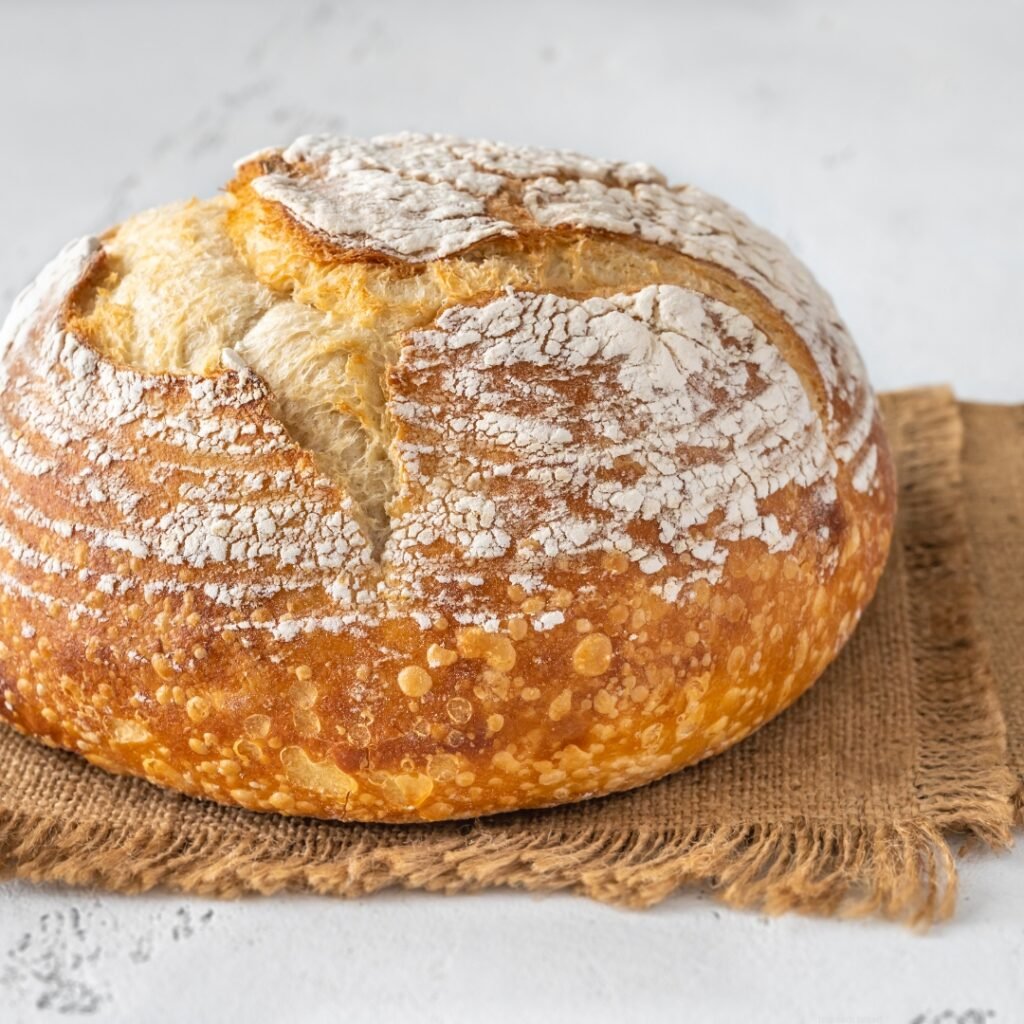
Low carb bread is the perfect solution if you’re craving bread but want to keep your carbohydrate intake in check. Whether you’re following a low-carb, keto, or diabetic-friendly diet, homemade low carb bread can satisfy your bread cravings without the guilt. Making your own bread at home not only gives you control over the ingredients but also allows you to enjoy a healthier, more personalized loaf. In this article, I’ll guide you through the process of baking your own bread with reduced carbs, from simple recipes to customization tips, so you can enjoy delicious, low-carb bread without compromising your health goals. Let’s dive in and get baking!
What Is Low Carb Bread and How Does It Differ From Regular Bread?
Table of Contents
Toggle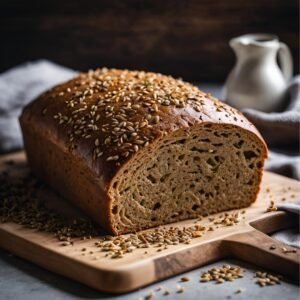
What Makes Low Carb Bread Different?
Low carb bread is a healthier version of traditional bread, designed to have fewer carbohydrates per serving. While regular bread is typically made from refined wheat flour or white flour, which are high in carbs, low net carb bread uses alternative ingredients like almond flour, coconut flour, and flaxseed meal. These substitutes provide a much lower carbohydrate count and often come with additional nutritional benefits, such as higher fiber content and healthy fats.
For those who follow a low glycemic bread diet, these ingredients are particularly beneficial. The glycemic index measures how quickly a food raises your blood sugar. Traditional white bread can spike your blood sugar, while bread with reduced carbs has a lower glycemic index, offering a more stable source of energy.
Why Do People Choose Low Carb Bread?
The main reason people opt for low carb bread is to manage their carbohydrate intake, especially for those with specific health goals like weight loss or controlling blood sugar levels. For example, low glycemic bread is an excellent choice for individuals with diabetes because it helps control blood sugar fluctuations. The best part? It can still satisfy your bread cravings without sabotaging your diet.
Low net carb bread also has the added benefit of being filling. Due to the higher fiber content from ingredients like flaxseed meal and psyllium husk powder, it helps you feel fuller for longer, reducing the chances of snacking between meals.
What Are the Benefits of Making Low Carb Bread at Home?

What Are the Benefits of Making Low Carb Bread at Home?
Control Over Ingredients
One of the main benefits of making low carb bread at home is the control you have over the ingredients. Store-bought low-carb bread often contains preservatives, hidden sugars, and various additives to improve texture, taste, and shelf life. When you bake at home, you can ensure that only wholesome, natural ingredients are used, making it a healthier and more personalized option.
For instance, you can opt for almond flour or coconut flour instead of wheat flour, and incorporate healthy fats like olive oil, avocado, or butter to enhance the nutrient profile of your bread. By baking your own low-carb bread, you can avoid processed ingredients that may not align with your health goals.
Baking Bread Without Additives
One of the key advantages of homemade low-carb bread is that you can bake it without unnecessary additives. Store-bought low-carb bread often includes ingredients designed to extend shelf life or improve texture. While these additives are not necessarily harmful in small amounts, they’re not necessary for making delicious, wholesome bread at home.
Common Additives in Store-Bought Low-Carb Breads:
- Xanthan Gum: Often used as a thickening agent or to provide elasticity. While it’s generally safe, it can cause digestive issues in some individuals, especially when consumed in large amounts.
- Monoglycerides and Diglycerides: These emulsifiers are used to improve texture and prevent separation in baked goods. Though not harmful in moderation, they are unnecessary for making low-carb bread at home.
- Preservatives like Calcium Propionate: Used to prevent mold growth and extend the shelf life of bread. Homemade bread doesn’t require these preservatives when it’s fresh.
- Sugar Alcohols (e.g., Erythritol, Maltitol): These are often added to sweeten low-carb bread without impacting blood sugar. While considered safe for most, they can cause bloating or digestive discomfort in some people.
- Artificial Colors or Flavors: Some store-bought low-carb breads may use food coloring or artificial flavorings to improve the visual appeal or taste. These are entirely unnecessary and can be avoided with natural ingredients.
While many of these additives are not harmful in moderation, they are ingredients that you simply don’t need when you bake bread at home. By choosing to bake your own bread, you can eliminate the unnecessary chemicals and preservatives often found in store-bought varieties, creating a healthier and more natural loaf.
Potential Harmful Additives to Avoid:
- Propylene Glycol: Commonly used as a humectant to retain moisture. While safe in controlled amounts, it’s best to avoid when possible, as it has been linked to potential health risks when consumed in large quantities over time.
- Potassium Bromate: Used to improve the elasticity and rise of dough. This additive has been banned in several countries due to its potential carcinogenic effects, though it’s still allowed in the U.S.
- Artificial Sweeteners (Aspartame, Sucralose): These synthetic sweeteners are sometimes added to low-carb bread to provide sweetness without calories. Though generally considered safe, long-term consumption of artificial sweeteners has raised concerns about their impact on gut health and metabolic function.
Making low-carb bread at home means that you don’t have to rely on these additives. You can use natural ingredients like almond flour, coconut flour, eggs, and healthy fats to craft a loaf that is both delicious and free from chemicals and preservatives.
Customization to Your Preferences
Baking your own low-carb bread also allows you to customize the flavor and texture to your liking. You can experiment with various nut flours, add seeds like sunflower, chia, or flax, or even incorporate herbs and spices like rosemary, garlic, or cinnamon. Whether you prefer a savory loaf or a slightly sweet bread, the possibilities are endless, and you can adjust the recipe to suit your personal tastes and dietary needs
What Ingredients Do You Need for Low Carb Bread?
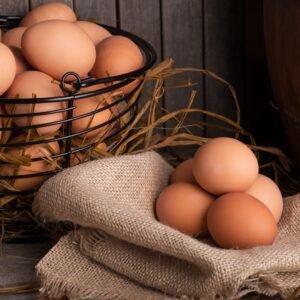
Making your own low carb bread at home is surprisingly simple, and you probably already have some of these ingredients in your pantry.
Low Carb Flours and Ingredients for Baking:
When baking low-carb bread, the ingredients you choose are key to achieving a great texture and flavor. Here are some of the most popular ingredients used in low-carb bread recipes, along with their net carb content per half cup to help you make informed choices:
- Almond flour – A popular base for bread with reduced carbs, this flour is rich in healthy fats, low in carbohydrates, and offers a mild, nutty flavor.
Net carbs per half cup: 3 grams - Coconut flour – This flour is another excellent low-carb option, though it’s more absorbent than almond flour, so you may need to use less or increase the amount of liquid in the recipe.
Net carbs per half cup: 6 grams - Flaxseed meal – Adds fiber and omega-3 fatty acids. It also helps bind the dough together, making it a great addition for low-carb bread.
Net carbs per half cup: 1 gram - Psyllium husk powder – A great source of soluble fiber that gives the bread a better texture and a more authentic bread-like consistency.
Net carbs per half cup: 0 grams - Lupin flour – A lesser-known but fantastic option for low-carb baking. Lupin flour is made from the lupin bean, which is high in protein and fiber while being very low in carbs. It adds a slightly nutty flavor and is great for helping to give bread a better structure.
Net carbs per half cup: 2 grams - Baking powder – Helps the bread rise and gives it a light, fluffy texture. Make sure to choose zero-carb brands to keep the bread truly low-carb.
Net carbs per half teaspoon: 0 grams (choose brands without added sugars) - Eggs – Eggs act as both a binder and a source of moisture, ensuring your low-carb bread holds together while keeping it moist.
Net carbs per large egg: 0 grams - Olive oil or butter – Adds richness and flavor to the bread. These healthy fats help improve the texture and keep the bread from becoming too dry.
Net carbs per tablespoon: 0 grams - Salt – Enhances the overall taste of the bread and balances the flavors.
Net carbs per teaspoon: 0 grams - Water – Essential for mixing and helping the dough come together.
Net carbs per cup: 0 grams
Can I Bake Low Carb Sourdough At Home?
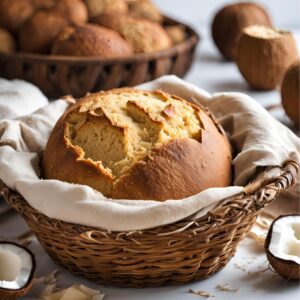
Absolutely! Low Carb Sourdough is Possible
Yes, you can absolutely bake low carb sourdough at home! While traditional sourdough bread relies on high-carb flours, there are now innovative ways to create the same tangy, chewy goodness without the excess carbohydrates. With the right ingredients and techniques, you can enjoy authentic low carb sourdough that fits perfectly into your health-conscious lifestyle. The best part is that baking low carb sourdough is more achievable than you might think, and you don’t have to compromise on taste or texture.
A Great Place to Start: Sinless Sourdough
If you’re new to low carb sourdough baking or want to perfect your skills, a great resource to consider is Sinless Sourdough. This online membership and community website offers a comprehensive guide to making authentic low carb sourdough at home. It’s designed for people just like you who want to bake healthier bread options without sacrificing flavor or quality. The platform includes step-by-step tutorials, tips for troubleshooting, and access to a supportive community of fellow bakers. Whether you’re a beginner or experienced, Sinless Sourdough is the perfect place to start your journey into the world of low carb sourdough.
How Can You Incorporate Sourdough Low Carb Bread into Your Diet?

Sourdough low carb bread can be enjoyed in various ways, making it a versatile addition to any low-carb or keto lifestyle.
Breakfast Options
Try a slice of sourdough low carb bread toasted with avocado for a fiber-packed breakfast.
Lunch & Dinner Ideas
Use it as a base for sandwiches, or pair it with low-carb soups for a filling meal.
Snack Time
Enjoy a slice of net-carb bread with a keto-friendly spread or topping for a quick, healthy snack.
- Enjoy as a keto bread substitute for traditional bread in meals.
- Great for making low-carb sandwiches and toast.
- Pair with healthy fats for a nutrient-dense snack.
Sourdough low carb bread offers a unique combination of health benefits, including GLP-1 enhancement, appetite control, and better glycemic management. Whether you’re looking to manage your weight, improve digestion, or reduce blood sugar spikes, carb-reduced bread like sourdough is a powerful ally in your health journey.
Ready to incorporate low glycemic bread into your diet? Try sourdough low carb bread today and experience its benefits firsthand. Subscribe to our newsletter for more health tips and delicious recipes!
Can You Customize Your Low Carb Bread Recipe?
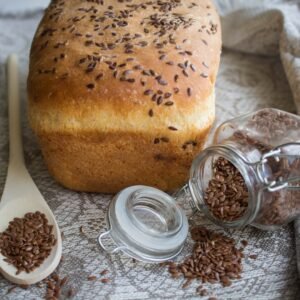
One of the best parts about making low carb bread at home is that you can easily customize the flavor.
Here are a few ideas for enhancing the taste:
- Herbs and spices: Add garlic powder, rosemary, thyme, or oregano for a savory loaf.
- Seeds: Add chia seeds, sunflower seeds, or pumpkin seeds for added texture and nutrition.
- Sweeteners: If you prefer a sweet bread, you can use natural sweeteners like stevia, erythritol, or monk fruit instead of sugar to keep the bread low carb.
Can You Make Gluten-Free Low Carb Bread?
Yes, many low carb bread recipes are naturally gluten free! By using ingredients like almond flour and coconut flour, you can create a low glycemic bread that’s suitable for those with gluten sensitivities or celiac disease. The texture may differ slightly from traditional bread, but it’s still delicious and satisfying.
What Are Some Common Mistakes to Avoid When Making Low Carb Bread?

Over-Mixing the Dough
Because low net carb bread uses alternative flours, it’s important not to over-mix the dough. Over-mixing can make the bread dense and heavy, rather than light and airy. Mix just until the ingredients are combined.
Not Adding Enough Moisture
Some bread with reduced carbs can become dry if not enough moisture is added. Be sure to include sufficient wet ingredients, such as eggs, oil, or water, to keep the dough moist and prevent the bread from drying out during baking.
Not Letting the Bread Cool
After baking, it’s tempting to slice into your low carb bread immediately, but it’s important to let it cool. Cooling allows the bread to firm up and reach its optimal texture. Slicing too early can lead to a crumbly loaf.
Can You Bake Low Carb Bread in a Bread Machine?

Yes, you can absolutely bake low-carb bread in a bread machine! While bread machines are often associated with traditional wheat-based loaves, they can also be a convenient tool for making low-carb bread with the right ingredients. Using a bread machine for low-carb bread allows you to enjoy the convenience of automated mixing, kneading, and baking while avoiding the hassle of handcrafting each step. Here’s what you need to know:
Why Use a Bread Machine for Low Carb Bread?
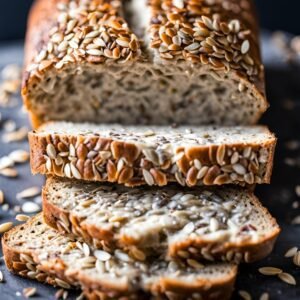
- Convenience: A bread machine simplifies the bread-making process, allowing you to mix, knead, and bake all in one appliance. You don’t have to worry about spending time kneading dough or monitoring baking times—the machine does it for you.
- Consistency: Bread machines ensure consistent results, which can be especially important when baking low-carb bread. Using the right flour combinations (like almond flour, coconut flour, or flaxseed meal) can sometimes be tricky, but a bread machine will help maintain the right texture and consistency in your loaf.
- Hands-Free Baking: If you have a busy schedule, a bread machine can be a real time-saver. Simply add the ingredients, select the desired settings, and let the machine handle the rest.
Tips for Baking Low Carb Bread in a Bread Machine
While you can make low-carb bread in a bread machine, there are a few considerations to ensure the best results:
- Choose the Right Recipe: Not all low-carb bread recipes are suitable for a bread machine. Low-carb breads often have different textures and rising properties compared to traditional wheat bread. Look for bread machine-friendly low-carb recipes that account for the unique ingredients, like almond flour or coconut flour, which don’t rise as much as wheat flour. Make sure your recipe is specifically designed for a bread machine, or follow adjustments if you’re converting a regular low-carb recipe.
- Use the Correct Flours: Traditional wheat flour doesn’t work well in low-carb bread, so it’s important to use the right alternatives like almond flour, coconut flour, or flaxseed meal. These flours don’t rise the same way as regular flour, so you may need to adjust the amounts of yeast, leavening agents, and liquids in your recipe.
- Add More Liquid: Low-carb flours, particularly almond and coconut flours, tend to absorb more liquid than wheat flour. Be sure to add the right amount of liquid to avoid a dry, crumbly loaf. This might mean slightly adjusting the liquid-to-dry-ingredient ratio from traditional recipes.
- Experiment with Rising Agents: Unlike traditional bread made with wheat flour, low-carb bread may need additional help to rise. While most low-carb bread recipes rely on yeast, others may use baking powder or baking soda as a leavening agent. Yeast can work in low-carb bread, but due to the lower carb content, it may not rise as much. Some recipes may also require adding a small amount of sweetener like stevia or erythritol to feed the yeast.
- Choose the Right Setting: Bread machines often have multiple settings for different types of bread, including a “low-carb” or “whole wheat” setting. If your bread machine doesn’t have a low-carb setting, the “basic” or “rapid” setting may still work fine. However, make sure you monitor the dough as it mixes to ensure it has the right texture—low-carb doughs can sometimes be thicker or stickier than traditional doughs.
- Don’t Overload the Machine: Unlike regular flour-based bread, low-carb breads tend to be denser. If you’re making a larger loaf, be careful not to overload your bread machine. Follow the manufacturer’s recommendations for the maximum weight of dough the machine can handle to avoid malfunctioning or uneven baking.
What Are the Benefits of Using a Bread Machine for Low Carb Bread?
- Faster Preparation: A bread machine speeds up the bread-making process. With the machine handling the mixing and kneading, you can spend less time on manual labor, and your low-carb bread will be ready to bake in just a few hours.
- Easier Clean-Up: Unlike making bread by hand, a bread machine minimizes the mess, as you only need to clean the bread pan and the mixing paddle. This saves you time and effort in the kitchen.
- Perfect for Beginners: If you’re new to baking low-carb bread, using a bread machine can help simplify the process. You don’t need advanced baking skills or experience to achieve good results, as the machine takes care of most of the work.
What to Avoid When Baking Low Carb Bread in a Bread Machine
- Avoid Using Only Almond Flour: Almond flour is excellent for low-carb bread, but on its own, it can lead to a dense loaf that may not rise properly. Try mixing it with coconut flour or flaxseed meal for better texture and structure.
- Don’t Skip the Yeast: Yeast is essential for low-carb bread to rise and develop a fluffy texture. Some low-carb recipes rely solely on baking powder or baking soda, but yeast helps improve the texture and overall quality of the bread.
- Don’t Overmix or Overbake: Low-carb bread dough can be denser than traditional bread, and overmixing or overbaking can lead to a dry, crumbly loaf. Keep an eye on the bread’s texture during the baking process to ensure it doesn’t get too tough.
How Can Low Carb Bread Help with Your Health Goals?

Is Low Carb Bread Good for Weight Loss?
If you’re trying to lose weight, low net carb bread can be a helpful addition to your diet. Since it’s low in carbs and high in fiber, it can help reduce hunger and prevent blood sugar spikes, both of which contribute to weight gain. The added fiber helps keep you feeling full, reducing the urge to snack.
How Does Low Carb Bread Impact Blood Sugar Levels?
For those with diabetes or insulin resistance, low glycemic bread is a great choice. It has a smaller impact on blood sugar levels than regular bread, which can cause spikes. By opting for bread with reduced carbs, you can maintain more stable blood sugar levels throughout the day.
FYI: SOURDOUGH MEDICAL STUDIES AND REVIEWS:
Here they are:
- Does Sourdough Bread Provide Clinically Relevant Health Benefits?: Link: https://pmc.ncbi.nlm.nih.gov/articles/PMC10399781/
- The Sourdough Microbiome : Link: https://asm.org/articles/2020/june/the-sourdough-microbiome
- Sourdough Microbiome Comparison and Benefits: Link: https://pmc.ncbi.nlm.nih.gov/articles/PMC8306212/
- Nutritional Benefits of Sourdough; Systematic Review : Link: https://pubmed.ncbi.nlm.nih.gov/36811591/
- Use of sourdough in low FODMAP baking : Link: https://pubmed.ncbi.nlm.nih.gov/29932101/
Disclaimer:
All information provided on this website regarding the health benefits of sourdough low carb bread is intended for educational purposes only. The content presented is not meant to be taken as specific medical advice for any individual. It should not be considered a replacement for professional medical guidance or treatment. If you have any health concerns, especially related to diabetes, pre-diabetes, or any other medical condition, please consult with a healthcare professional immediately.
🔥 UNLOCK MORE RECIPES STARTER + MEMBERSHIP – Only $99 CAD! 🔥
Get a second starter with your membership – the exclusive membership recipes use 2 different low-carb feedings to bake the 3 different styles of breads and baked goods (weight loss, low-carb lifestyle maintenance, fast and easy discard recipes) that will transform your baking game beyond what your current starter can achieve!
💰 PRICING: Regular Price: $198 CAD Today Only: $99 CAD (Only $99 CAD!)
SINLESSSOURDOUGH.COM
Click the Starter + Membership Box
Your Discounted Membership Includes:
🥖 1849 San Francisco Gold Rush Dehydrated Starter: Scientifically validated starter shipped free to your door!
📦 FREE Shipping: Your starter ships to you at no extra cost
🎥 25+ Instructional Video Trainings: Master Keto & Low-Carb Sourdough Baking with comprehensive video lessons
📚 3 E-Sinless Sourdough Cookbooks: Easy-to-follow sourdough recipes for your low-carb lifestyle
📖 3 E-Keto Low-Carb Cookbooks: Delicious low-carb recipes to complement your baking
🗓️ E-28-Day Keto Kickstarter Journal & Planner: Stay on track with your low-carb journey
📝 Keto Low-Carb E-Cheat Sheets & Quick Guides: Shortcuts for perfect baking every time
🍞 Training for 3 Styles of Keto & Low-Carb Sourdough: Learn recipes for weight loss, lifestyle maintenance, and easy discard recipes
💬 Exclusive Community Access: Share tips, ask questions, and get expert support from fellow bakers
🚀 DON’T MISS OUT – GRAB IT FOR Only $99 CAD NOW! 🚀
Transform Your Baking Today:
- Visit sinlesssourdough.com™
- Click “Starter + Membership”
- Proceed to the purchase page
- Enter code: SINLESS50
- Complete checkout and START BAKING guilt-free sourdough immediately!
SINLESSSOURDOUGH.COM
Click the Starter + Membership Box
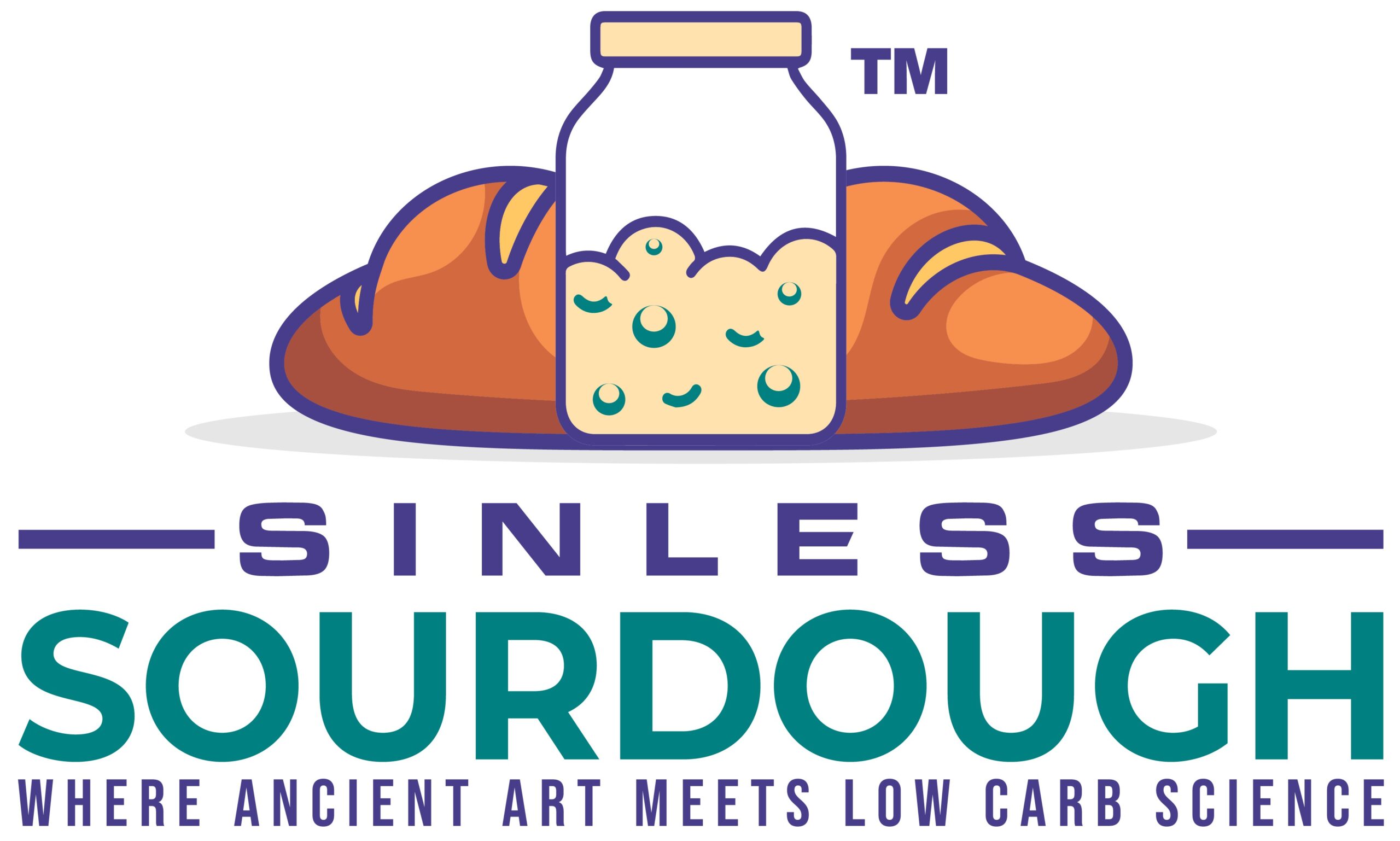


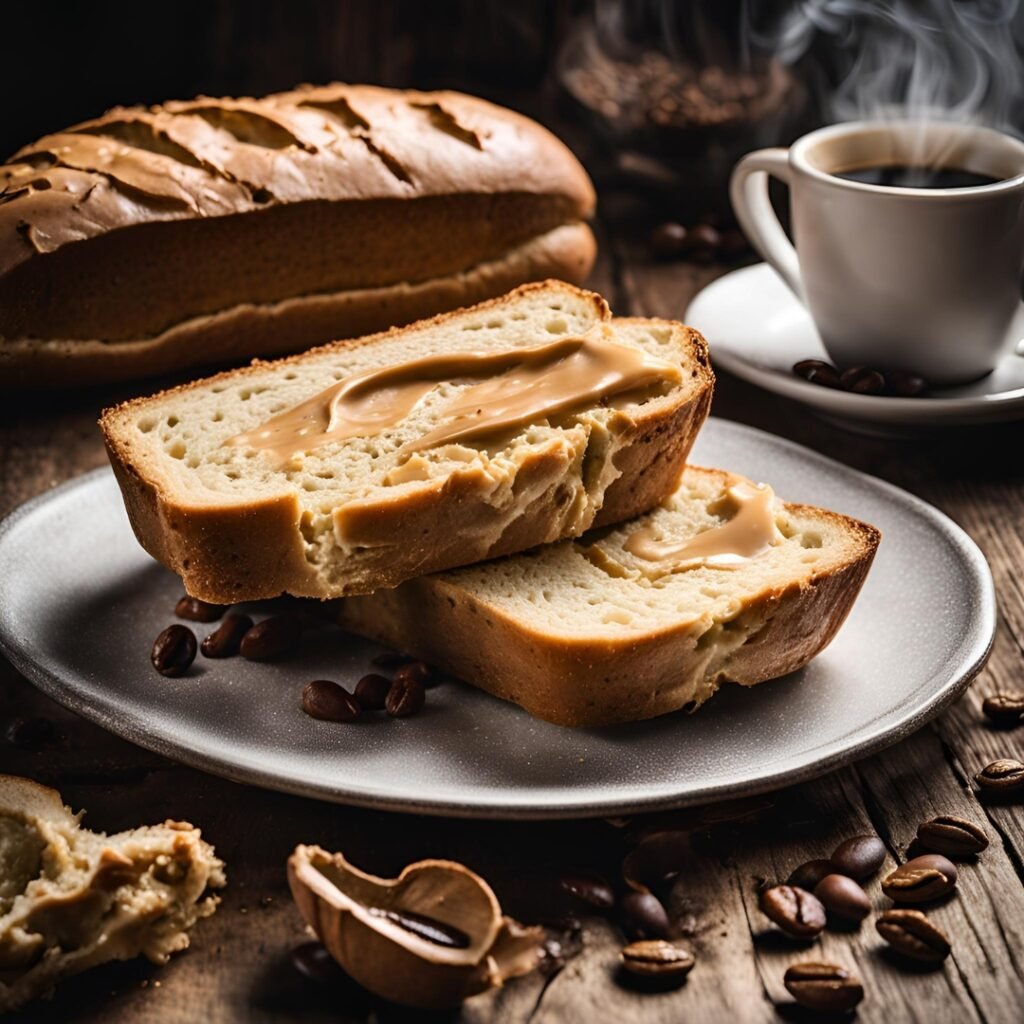
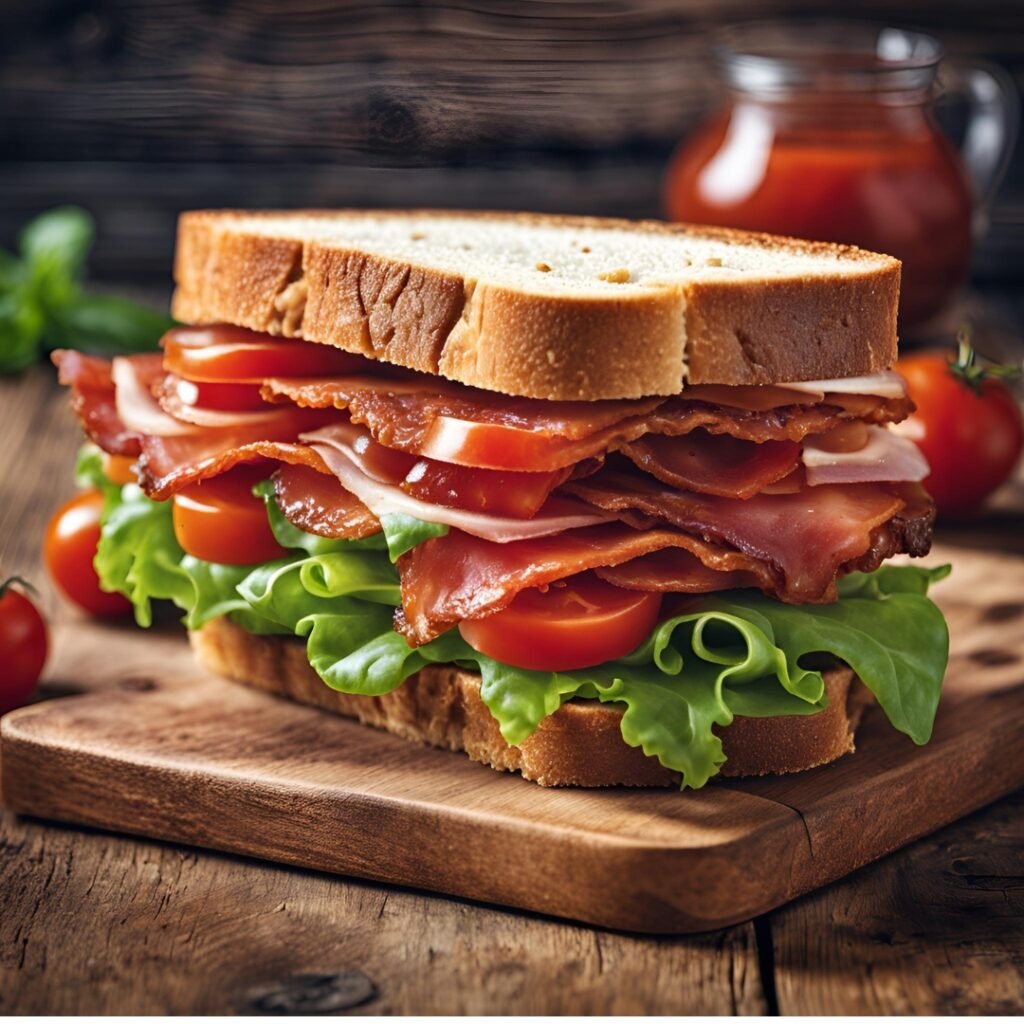
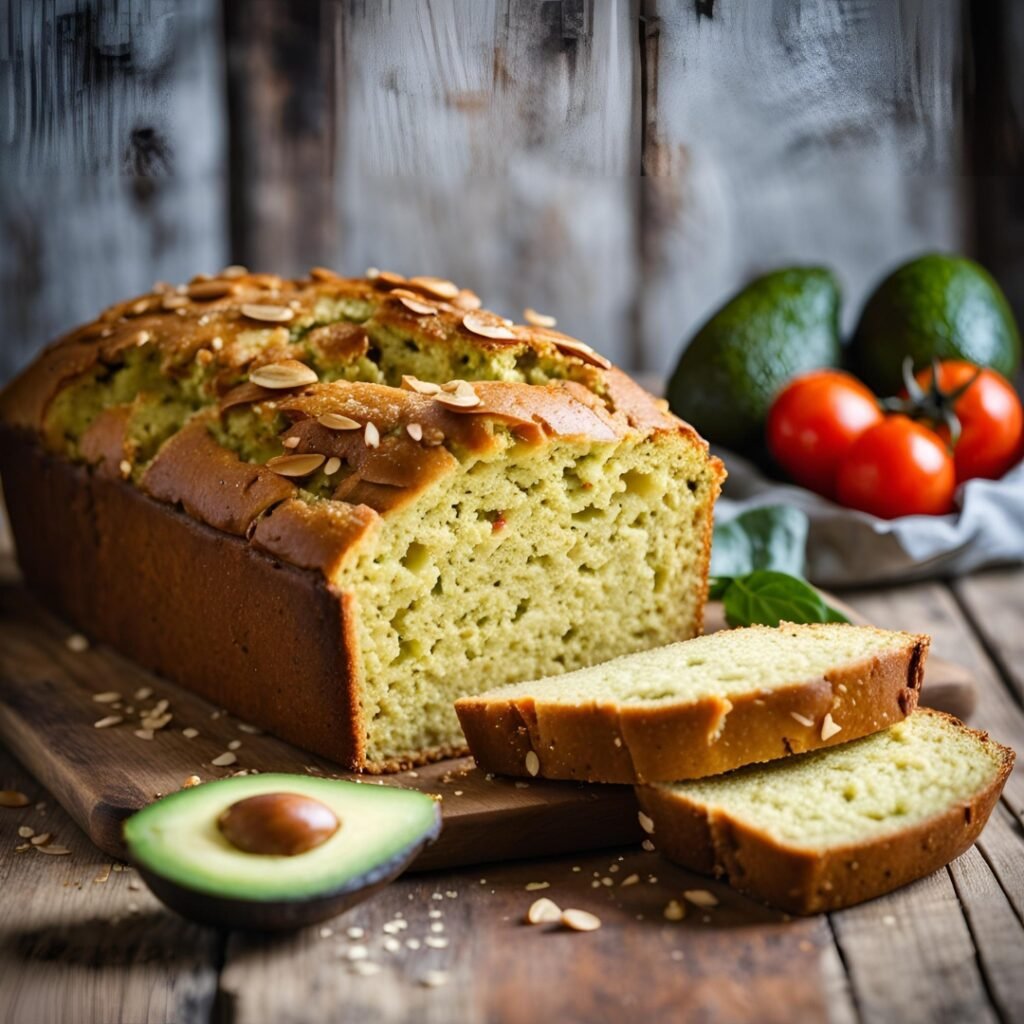


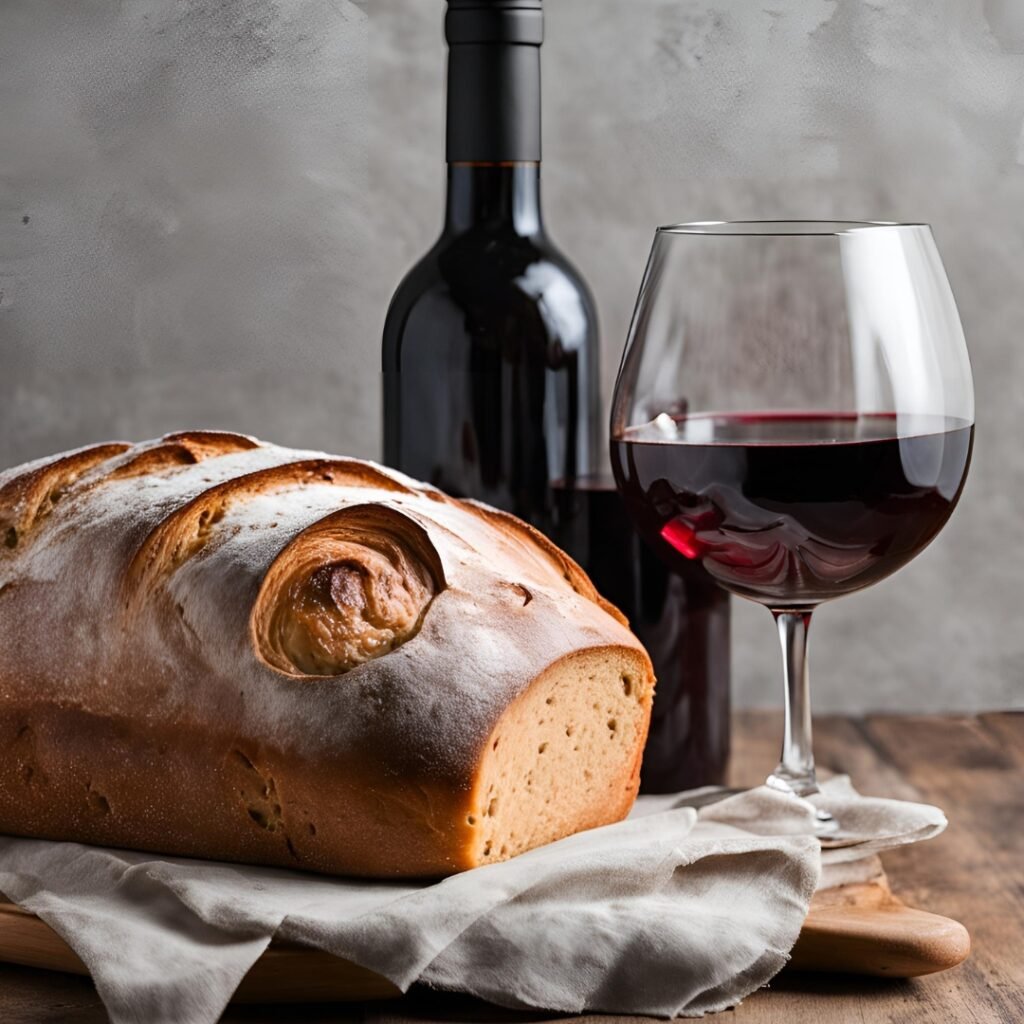


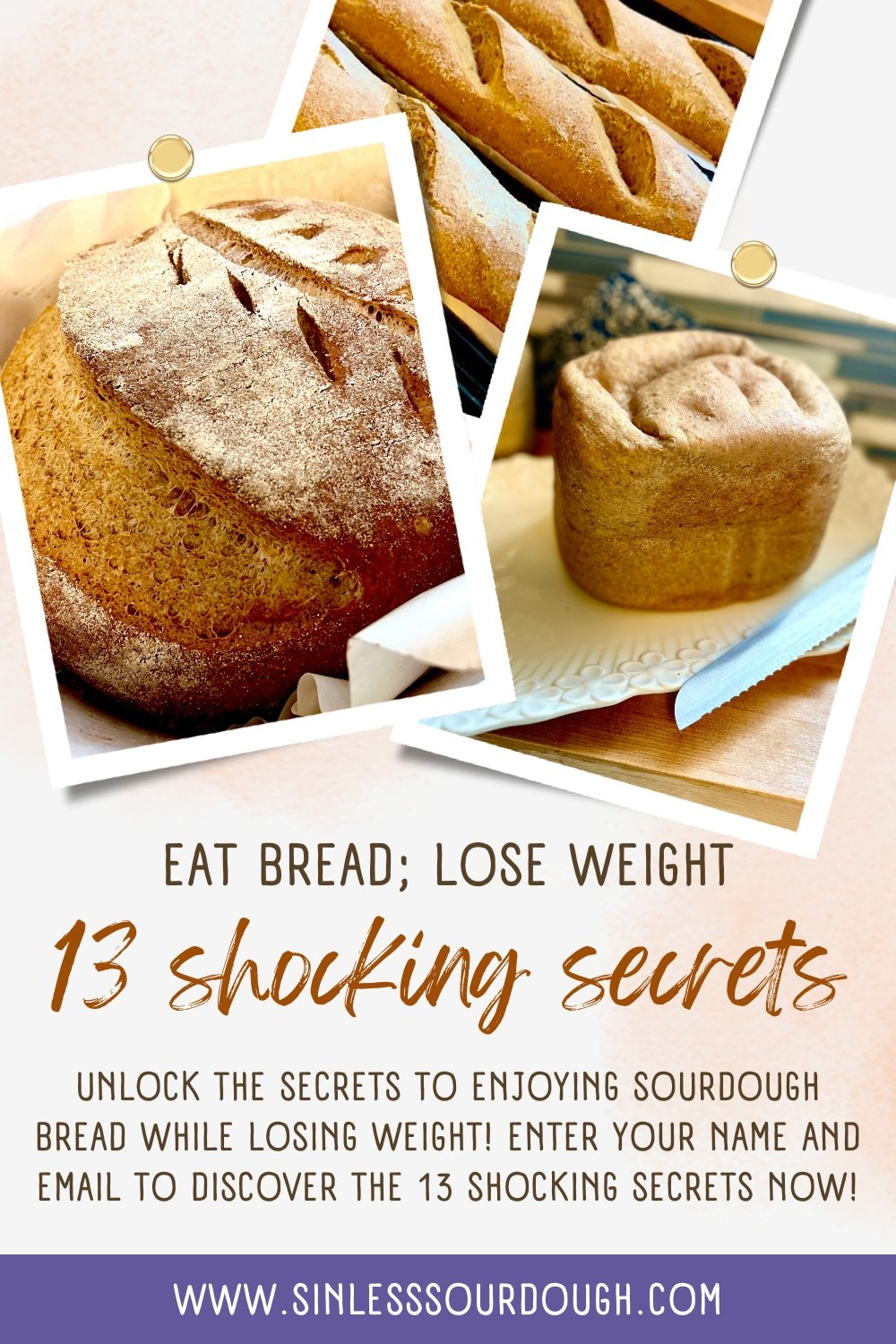
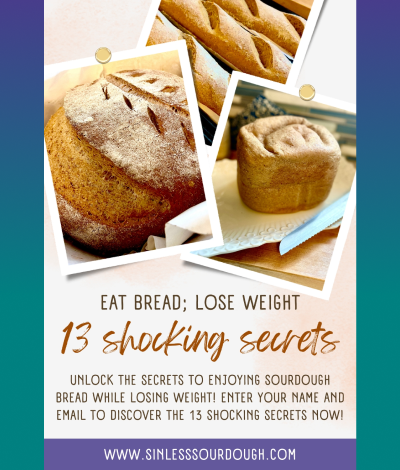
Responses